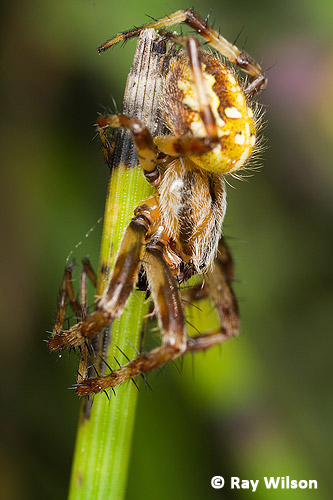
Araneidae
Orb-weaving Spiders
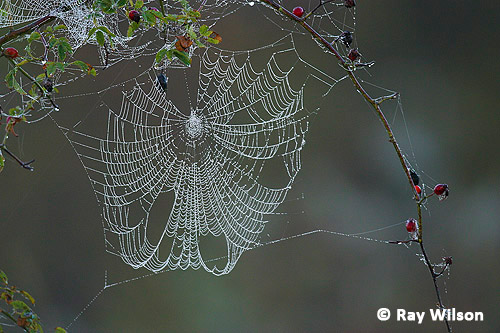
Araneus sp. web in the morning dew - Norfolk, England - September 2002
The Araneidae are a large (2800 species) and diverse family, ranging in size from tiny (eg. Singa species rarely exceed 2mm) to the enormous Nephila spiders that are capable of capturing small birds in their very strong webs. The majority of its members weave flat, circularly spiral webs which, in many species are rebuilt every night. There are exeptions, however. The most famous are the bolas spiders of Africa and Australia which produce a single strand of silk with a sticky globule on its end which it dangles from a foreleg to ensnare passing moths.

Araneus quadratus - Cheshire, England - September 2006
The 4-spot Orb-weaver Araneus quadratus is one of the commonest, and largest, spiders in the UK. Large females with body lengths of up to 15mm sitting on their webs are a familiar sight in late summer and autumn.
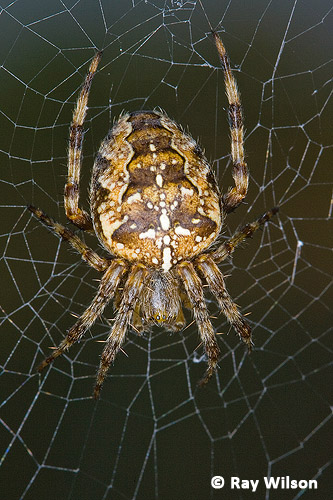 female Araneus diadematus |
Another very common, and equally large, British orb-weaver is Araneus diadematus (above). It is easily distinguished from A. quadratus by the cross pattern on its abdomen. Common names for this species include European Garden Spider and Cross Orb-weaver.
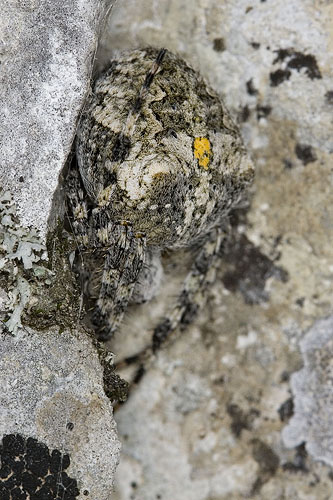
Araneus angulatus
Trigrad, Bulgaria - June 2007
A. angulatus (above) is very rare in Britain, occurring only in a few localities along the south coast. This specimen was photographed in the Rhodopi Mountains of Bulgaria, where I have been told it is also rare. This large female (ca. 15mm body length) was beautifully camouflaged in its resting place beside its 1m diameter web.
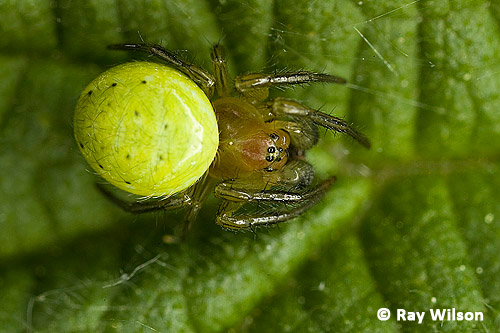
male Araniella sp. - Cheshire, England - May 2009
There are 5 species of Araniella found in Britain, although three of these are rare. Their genus is easily recognisable due to their vibrant green colouring, but identification to species requires microscopic examination of the genitalia.
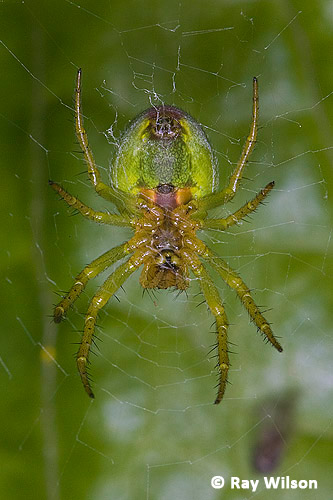
female Araniella cucurbitina |
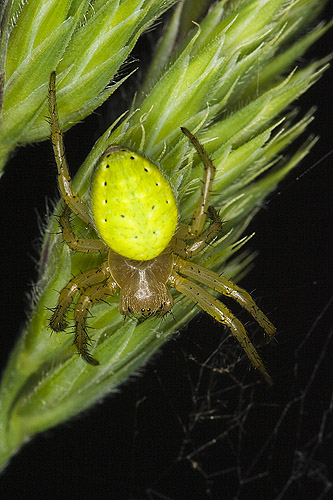
female Araniella |
male Araniella sp. - Cheshire, England - May 2009
There are only 3 species of Aculepeira found in Europe, but none of these beautifully marked, distinctive spiders occur in Britain.
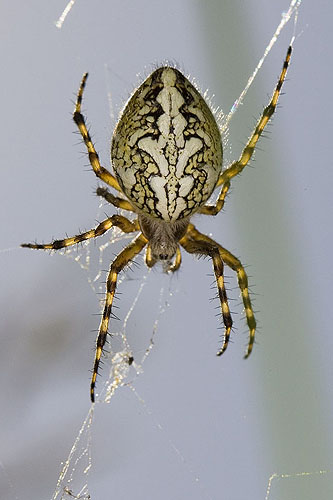
|
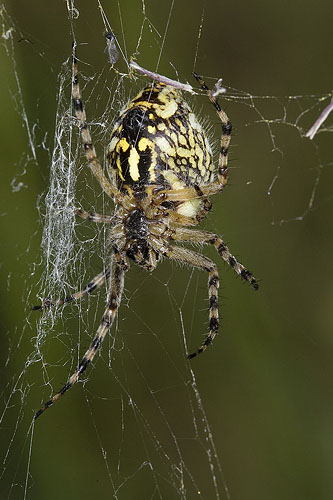
|
Aculepeira ceropegia - Trigrad, Bulgaria - June 2007
A. ceropegia is the most widespread member of the genus and is found throughout most of Europe.
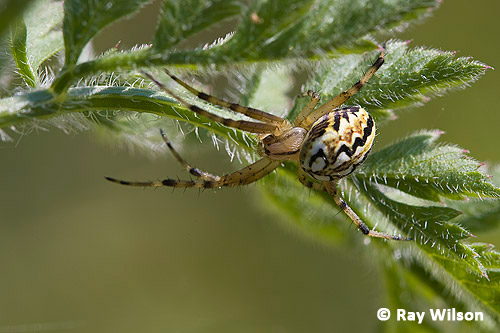
Aculepeira armida - Lesvos, Greece - May 2006

Argiope argentata - Bahama Islands - January 2014
Like most other members of its genus, Argiope argentata decorates its web with a highly visible cruciform zigzag-patterns, known as stabilimenta. You might think that by drawing attention to itself in this way may make it easy prey for predators, but research has indicated that the opposite it true. By placing itself in the centre of its web with its legs extending out at the same angles as the stabilimenta, the spider may be creating the illusion of appearing significantly bigger than it actually is, thus deterring many predators, especially gape predators like lizards, from tackling it. Also, by increasing the visibility of its web, large animals (including humans) are less likely to blunder into it, saving the spider from having to waste valuable energy and resources in repairing and rebuilding its web.
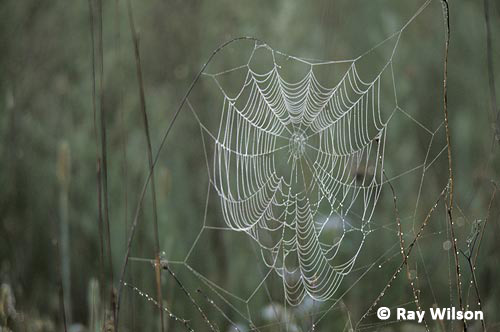
Maryland, USA - May 2001
Ray Wilson owns the copyright of all images on this site.
They may not be used or copied in any form without prior written permission.
raywilsonphotography@googlemail.com
